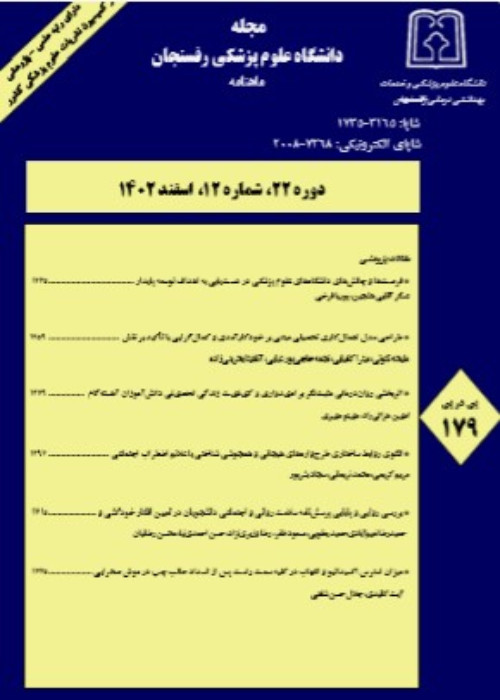Surveying the Studies on Iranian Freshwater Snails and Their Parasitic Infections Based on the Scientific Documents of the Databases: A Systematic Review
Author(s):
Abstract:
Background And Objectives
Freshwater snails play the role of the main intermediate host in the life cycles of trematodes and some nematodes. Therefore, they are of medical and veterinary importance. In Iran, a lot of studies have been conducted on freshwater snails and their parasitic infections. Furthermore, there is no reliable and compiled reference associated with malacology studies. So, it seemed necessary for a review work on the basis of available documents pertaining to Iranian freshwater snails and their parasitic infections to be carried out.Materials And Methods
For this purpose, based on the systematic review studies, all studied documents on malacology fields including journal published articles, congress articles, theses, and conducted research projects in Iran were collected from the trusty databases such as Scopus, Science Direct, PubMed, Google Scholar, SID, Iran Doc, and Magiran by using specific key words. Afterward, the unrelated documents were removed, whereas the respective ones were selected and the required information was extracted from them.Findings: At the first stage of the study, a total of 220 documents with various study fields on malacology were collected. After screening the collected documents, overall, 31 published articles and 3 theses considered to be parallel to our work, were selected in order to analyze. The results indicated that the malacology studies have been only implemented in 10 provinces of Iran. In view of the diversity specification, so far, 41 species belonging to 22 genera of freshwater snails have been identified in Iran. The most identified species pertained to Lymana (7 species), Bithinia (4 species), Melanopsis (4 species), and Planorbis (3 species), respectively. The most studies, whether for determining the Iranian freshwater snail species diversity or identifying the parasitic agents as well as deterimining the prevalence rate of parasitic infections, were on microscopic basis. The prevalence rate of parasitic infections between the snails varied in the range from 0.33% to 74.56%. The highest infection rate was related to Lymnaea auricularia snails with Ecinostomcercaria and Furcocercaria from West Azerbaijan province, whereas the lowest infection rate was related to the species of Lymnaea, Planorbis and Physa with the Cercarial Dermatitis agents from Mazandaran province.
Conclusion
In terms of diversity, the species of freshwater snails are rich in Iran and it is supposed that there are yet numerous unknown species. Most parts of Iran are intact due to no malacology studies. So, more studies must be implemented over there. Mainly, parasitic infections have been reported on family and genus levels. It is essential to identify the parasites on species levels by using more exact methods.Keywords:
Language:
Persian
Published:
Journal of Rafsanjan University Of Medical Sciences, Volume:15 Issue: 5, 2016
Pages:
469 to 490
magiran.com/p1581708
دانلود و مطالعه متن این مقاله با یکی از روشهای زیر امکان پذیر است:
اشتراک شخصی
با عضویت و پرداخت آنلاین حق اشتراک یکساله به مبلغ 1,390,000ريال میتوانید 70 عنوان مطلب دانلود کنید!
اشتراک سازمانی
به کتابخانه دانشگاه یا محل کار خود پیشنهاد کنید تا اشتراک سازمانی این پایگاه را برای دسترسی نامحدود همه کاربران به متن مطالب تهیه نمایند!
توجه!
- حق عضویت دریافتی صرف حمایت از نشریات عضو و نگهداری، تکمیل و توسعه مگیران میشود.
- پرداخت حق اشتراک و دانلود مقالات اجازه بازنشر آن در سایر رسانههای چاپی و دیجیتال را به کاربر نمیدهد.
In order to view content subscription is required
Personal subscription
Subscribe magiran.com for 70 € euros via PayPal and download 70 articles during a year.
Organization subscription
Please contact us to subscribe your university or library for unlimited access!



